ARC iRacing NASCAR Truck Series Rulebook Updated - 2/27/23
1. General rules and regs: 1.1. Our league will operate using iRacing’s sporting code along with some extra procedures to ensure we don’t have any shenanigans found in official races.
1.2 Voice chat room etiquette during ARC NASCAR races - ARC server rules must be adhered to!
iRacing-1 is general banter during a race. If you join here, expect conversation race specific or not for the entire evening.
iRacing-2 is minimal chat. Conversation needs to be on topic. Example: “Safety Car is coming out of Turn 2” or “Big incident at Turn 5.”
2. Incidents and reporting: 2.1. Any on track incidents that you feel broke sporting code, or deemed to be malicious on track can and should be reported following the race in #trucks-incident-report. 2.2. To report any incidents, save the .rpy file of the incident using the replay cut function in the sim UI of the race session, along with a description of your POV of the incident. Saving this .rpy file will give the mods every angle possible to look at the incident. 2.3. All incident reports are to be reported ASAP. Drivers have 48 hours after the race ends to file their report. All incidents not reported within this window will go on unresolved and no penalties or warnings will be given out. 2.3.1. Mods will also look over some minor incidents that go unreported and will assess penalties accordingly to drivers. These however, will likely just be given warnings, and not penalty points.
2.3.2 In a situation where a report submitted or incident reviewed by the moderators shows netcode was potentially a factor in causing the collision, the driver making the move that causes the incident is still held responsible. 2.4. After all incidents are reported, the mods will review the replays and hand out warnings and penalties accordingly and results will be posted in #trucks-report-verdicts. Post-race time penalties may be awarded to drivers involved in incidents in which an unfair competitive advantage is gained without posing an issue of safety or danger.
2.4.1. Any incidents involving one of the mods (Andrew Surowiec [Mlg_God22] Matthew Rice [WolleyFreyr] John Krauser [Cricket Sushi] Cody Barrett [Cody Barrett] and Adam Thomsen [Adam “EV500” Thomsen]) will have that mod excluded from the conversation to avoid bias.
2.4.2 A driver may appeal after verdicts are handed out (within a reasonable time frame); however, the onus is on the person appealing to provide all supporting evidence, which must include the .RPY for their evaluation.
2.5. Black flags that are given out by iRacing may be requested to be cleared over iRacing voice chat in the middle of the session. Only moderators will be able to clear a black flag; however, after the request has been given and the black flag has been cleared, the following must happen:
2.5.1. Failure to provide a .rpy and context in #trucks-incident-reports will result in the following:
First offense - Immediate DSQ from the race, resulting in forfeiture of points for the driver and their team.
Second offense - Immediate DSQ and full forfeiture of points for the entire season points for the driver and their points contributed to the team.
Third offense - Immediate DSQ and removal from the ARC NASCAR Trucks league. Reinstatement will be on a case-by-case basis, but the removal will last the balance of the season at minimum. If the removal is in one of the final races of the season, then this could roll over to the next season.
2.5.2. If the .rpy is provided and the mod team believes the black flag should not have been cleared, a penalty will be given out. This penalty will be assessed on a case-by-case basis. Repeat offenders may be subjected to the penalties in 2.5.1.
3. Penalties
3.1. Penalties and warnings for incidents will be tracked here:
https://dmccourt55.online/seasons?championship=4 3.2. Drivers that earn 3 warnings for incidents will receive 1 penalty point 3.3. Infractions that will warrant warnings:
Not following proper restart procedures (sec. 4)
Not following green flag pit stop procedures (sec. 6)
Racing incidents that weren’t deemed to be completely intentional
3.4. Malicious and/or intentional incidents will be assessed penalty points based on the severity of the incident.
3.5. At 8 penalty points, a driver will receive a qualifying ban. 10 will be a session ban. Beyond that, the mods will assess the issue accordingly with a driver. 3.6. Penalties and warnings will remain in effect (i.e., counting towards qualifying and session bans) until 4 calendar months after the race.
3.7 Penalties are assessed for quitting early. Clicking GRID after the qualifying session ends means you are expected to complete at least 5 laps of a race.
Failure to complete the minimum number of laps will result in full forfeiture of points and assessed a penalty point.
Hardware problems, connection problems, etc. are eligible for waiver at the moderator’s discretion.
4. Start and restart procedures 4.1. While pacing under yellow, drivers are required to maintain a safe distance from the car ahead to avoid collisions.
4.2. While under yellow after the race has run a few laps, drivers are required to stay to the inside of the track to allow drivers catching up to the pace car a run off lane to slow down. 4.2.1. After a driver catches the field they are required to safely get to the inside lane as soon as possible. 4.3. On the 1 to green lap, by the time the pace car is entering turn 3, drivers must be formed up for the restart with no more than a 2 car lengths gap. Drivers will then be required to maintain a gap no bigger than 2 car lengths from the car ahead. This is to avoid drivers potentially trying to get a jump and cause a collision.
4.4. The leader will control the pace up to the restart. The leader must not fall below or go above 5 MPH (8 KPH) pace car speed. 4.5. The leader can go at any time they feel after the pace car turns into the pitlane, however, they must go once the green flag officially drops.
4.6. Drivers can not pass on the inside before the start/finish line (iracing will hand out a hefty penalty for this) however, drivers can pass on the outside
5. Wave-arounds
5.1. Lucky Dog rule is in effect at our races, per NASCAR rules.
5.2. Drivers a lap down can receive a wave-around if they end up between the pace car and the leader before the restart (this is automated)
5.3. To keep the field in a somewhat competitive manner, we will give out wave-arounds for certain drivers to get back to a competitive lap to have someone to race. Wave-arounds will not be given to drivers who are only one lap down. The lead lap must be earned or given one through 5.2.
Ex: Driver A and B are 1 lap down. Driver C gets involved in a crash from the lead lap and requires a tow. Driver C then becomes 4 laps down after said tow. Under the next yellow flag, they will receive 3 wave-arounds to become 1 lap down. If then Driver A goes 2 laps down, and then driver D gets involved in a crash, driver D will get 2 wave-arounds to be put to 2 laps down. We end up with C and B being 1 lap down, with A and D being 2 laps down. Allowing them to stay competitive within a small group of drivers.
This will help prevent our drivers from being discouraged from racing because they feel they can’t compete for a few extra, much valuable points.
5.4. Drivers given a competitive wave around will be required to pass the field on the outside line to prevent crashes.
6. Defensive maneuvers and blocking (on ovals)
6.1. Blocking and defending on ovals is very different from blocking and defending on road courses. There are certain things that you can do on ovals that you can’t on road and vice versa.
6.2 Fading. Fading is a legal defensive maneuver where a driver will slowly fade their car to the inside of the track when a driver behind has a run and pulls to the inside. **WE STRONGLY RECOMMEND ONLY EXPERIENCED DRIVERS USE THIS MANEUVER** 6.2.1. A clean fade requires the defending driver to not cut across the driver behind. The defending driver can squeeze down as far to the left as they want, so long as the driver behind has at least one lane of space. 6.2.2. It is the responsibility of the attacking driver to make a clean pass. The driver using a fade defensive maneuver can squeeze you as far down as they choose, so long as there is one lane of space for the attacking driver.
6.3. Positioning. Drivers who are defending can make one move to defend their position, but must maintain the lane they choose to go to until the attacking driver is alongside
6.3.1 For example, the defending driver moves 2 lanes to the left to defend their spot. They can not move a lane up or down until the attacking driver has picked a lane to move to. The defending driver can move after that to the next available lane. 6.3.2. The defending driver can move any number of lanes they feel they need to defend, whether that be all the way to the bottom, or just one lane. 6.3.3. The move can be made at any point down the straight, but must be done before the attacking driver is within one car length of the defending driver.
6.4. Corners. Defending into corners is tricky, as the racing lines change rapidly. The defending driver is entitled to the racing line so long as there is space to do so. 6.4.1 Dive bombs to the bottom lane from the attacking driver are permitted so long as the attacking driver is within good range to make the move, but if a collision is made from poor judgment on the attacking drivers part, the fault will lie solely with the attacking driver, and vice versa. 6.5. Pinching. Pinching is a maneuver that can be used defensively or offensively. It is defined as the driver on the outside of the driver on the bottom of the track keeping the driver close down to the bottom of the track on corner exit to stall their momentum.
7. Green flag pitstop procedures (ovals)
7.1. On tracks where the pit entry isn’t completely on the straight (ex. Michigan, Las Vegas, Charlotte) drivers will be required to get on to the apron of the track in turn 3. This is to ensure we don’t have any crashes on track from green flag stops. Mods will announce from race to race when this procedure is necessary.
7.2. Drivers are required to follow the proper pit exit procedures from iRacing’s sporting code (don’t get on track until you pass the blue cone, which is typically on the exit of turn 2)
8. Fast repairs
8.1. Crashing is part of racing. But we want to allow drivers to have a shot at more points and keep things competitive, so each driver has 2 fast repairs to use during the race. Use them wisely.
9. Road course rules
9.1. Drivers must leave racing room during overtaking maneuvers.
A defending car must leave adequate space for an attacking driver if the two cars are alongside to any degree coming into the braking zone for a corner.
Similarly, an attacking driver must leave adequate space for the defending driver, regardless of whether they are ahead of the defending car at any point.
9.1.1. In the instance where an attacking driver is not alongside to any degree coming into the braking zone for a corner, but rather is fully behind, the defending driver is not under any obligation to leave racing room and is entitled to assume the racing line.
In the case where contact results from an outbraking attempt by an attacking driver wherein the two cars only draw alongside in the braking zone, otherwise known as a ‘divebomb’, the responsibility for said contact shall lie solely with the attacking driver.
10. Points system
10.1 Our points system is the same as the official NASCAR points system, minus any points for stages (as we don’t run stage races). The race winner gets 40 points, with second place getting 35. Each position behind second gets 1 fewer point. If more than 36 drivers take the green flag, drivers finishing 36th and behind will each get one point. The driver who gets pole for the race will earn one bonus point, each driver who leads a lap will receive one bonus point, and the driver who leads the most laps will receive a further bonus point (the maximum point score for a single race is 43).
11. Driver/car numbers
11.1. Upon registration to the league, and before entering their first race, drivers must select a free car number which will be applied to their car in any league session.
11.2. Drivers may elect to change their number at any time; however, for continuity of broadcasting, drivers are encouraged to change only occasionally.
11.3. Driver numbers must be positive integers between 0 and 999. A driver may elect to preface their number with leading zeros such that it has a maximum length of 3 digits. For example, a driver with number 7 may elect to run as 07 or 007, but a driver with number 17 may not elect to run as 0017.
11.4. Drivers will automatically relinquish their number after not entering a race for two full consecutive seasons. At the end of each season, any numbers belonging to any drivers who have not raced in the newly concluded season or in the season prior will be relinquished. At this time, any other driver may switch to these numbers if so desired, or a new driver may claim the numbers upon entering the league.
12. Driver nicknames
12.1. Drivers' real iRacing names will be used in league broadcasts. For the sake of presentation, any drivers whose names end in a number will have an in-league nickname set with the number removed.
12.2. Drivers may request changes to their in-league nickname at any time. Changes will be approved by the moderators as long as they help with presentation of broadcasting and maintain the “real name” feel of iRacing membership. For example, league nickname changes which are reflective of a name by which a driver identifies more closely than their iRacing name would be approved.
13. Driver membership
13.1. Drivers will be removed from the league on iRacing after not having raced for 12 months (4 seasons), or after having joined but never raced after 6 months (2 seasons). This is in order to promote the league with a more accurate membership count.
14. Connection issues during a league session
14.1. Any driver who becomes aware that they are having network connectivity issues must take responsibility for slowing and stopping their car safely and resetting to the pit lane until the issue is resolved - bearing in mind that their car may still be present for other drivers even if they cannot see other cars on track.
15. Safety Rating Requirements
15.1 Any driver wanting to participate in a League session needs to have a Safety rating of C Class 1.0 to join any league session. Failure to obtain a C Class license will result in not being able to join a race till the requirement is met. Safety rating can be earned by doing daily public official sessions on any oval series that is a ranked official iracing server







